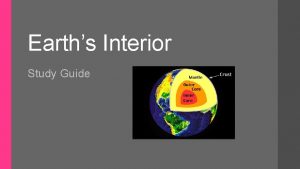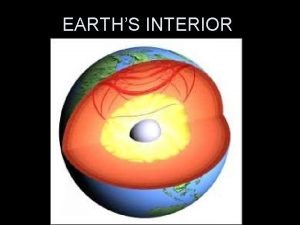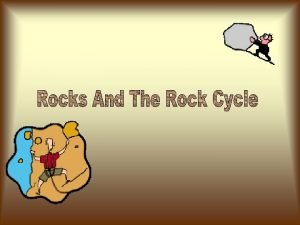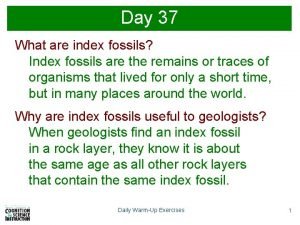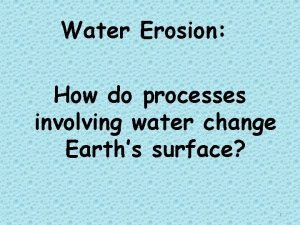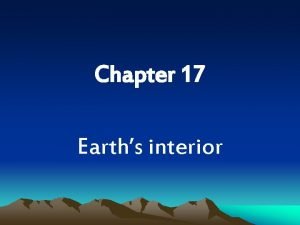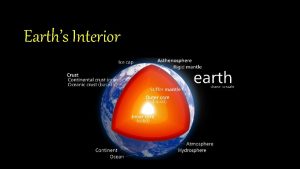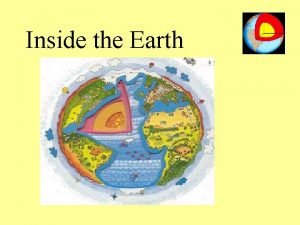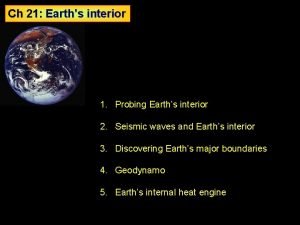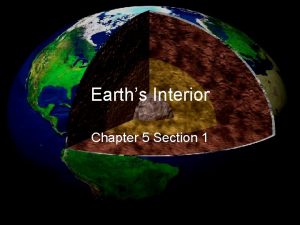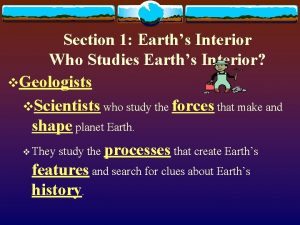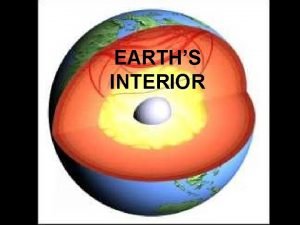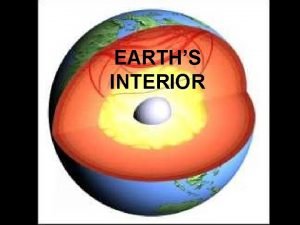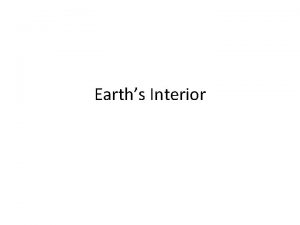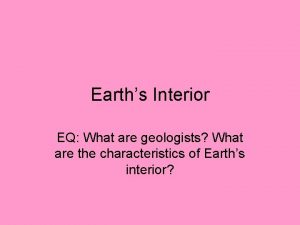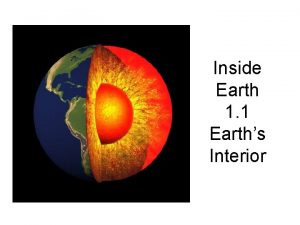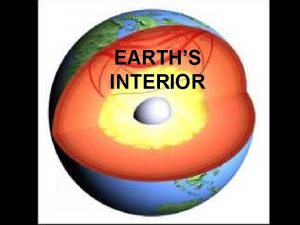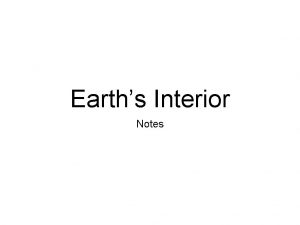Earths Interior Study Guide How do geologists know















- Slides: 15

Earth’s Interior Study Guide

How do geologists know what is in Earth’s interior?

How do geologists know what is in Earth’s interior? In order to understand Earth’s interior, geologist use direct and indirect evidence. Geologists gather direct evidence from drilling holes into Earth’s crust and collecting rock samples. Geologists gather indirect evidence from seismic waves generated during an earthquake.

Zenolith: mantel rocks which are exposed by earthquakes

Seismic Waves Vibrations that travel through Earth carrying the energy released during an earthquake.

Earth’s Layers

Crust The layer of rock that forms Earth’s outer crust. Continental Crust - Granite Oceanic Crust - Basalt

Mantel The layer of hot, solid material between Earth’s crust and core. The mantel has three layers: lithosphere, asthenosphere, and the lower mantel.

Lithosphere The uppermost part of the mantel and the crust together form the ridged layer called the lithosphere. Lithos means “stone”.

Asthenosphere Located below the lithosphere, the asthenosphere is soft and can bend like plastic. Asthenes means “weak”

Compare and contrast the asthenosphere with the lithosphere The asthenosphere and lithosphere are similar in that they are both part of the mantel. They differ in that the lithosphere is the rigid uppermost part of the mantel that includes the crust. The asthenosphere is located below the lithosphere and is soft similar to plastic. .

Core The core is made mostly of iron and nickel and consists of two parts, the outer core and inner core.

Outer Core Is a layer of molten metal that surrounds the inner core.

Inner Core The inner core is a dense ball of solid metal.

Pressure Results from a force pressing on an area. Because of the weight of the rock above, pressure inside the Earth increases as you go deeper.
 How do geologists study direct evidence of earth's interior
How do geologists study direct evidence of earth's interior Earth's interior
Earth's interior Earths interior
Earths interior To study a rock sample geologists observe
To study a rock sample geologists observe Know history know self
Know history know self Normalizing flow
Normalizing flow The one who reigns forever he is a friend of mine
The one who reigns forever he is a friend of mine Whats an index fossil
Whats an index fossil Explain how water erosion by groundwater can form a cave.
Explain how water erosion by groundwater can form a cave. The term geologists use for underground water is
The term geologists use for underground water is Earths layers foldable
Earths layers foldable Earths roation
Earths roation Whats a natural satellite
Whats a natural satellite Forest desert tundra grassland
Forest desert tundra grassland Pnitogens
Pnitogens Basalt
Basalt
